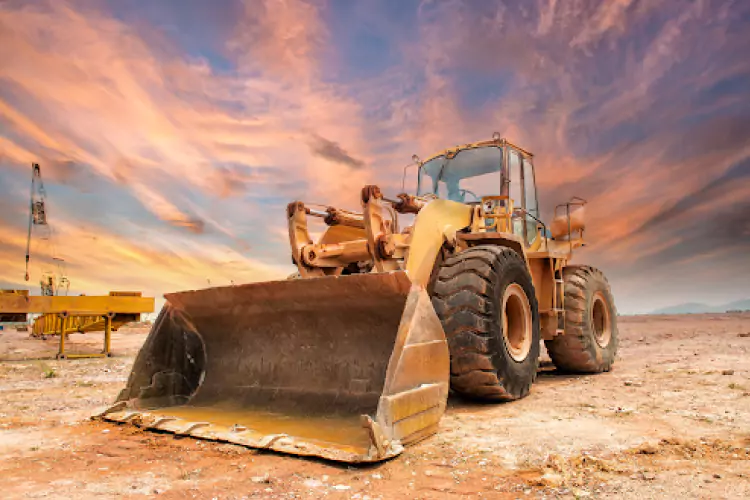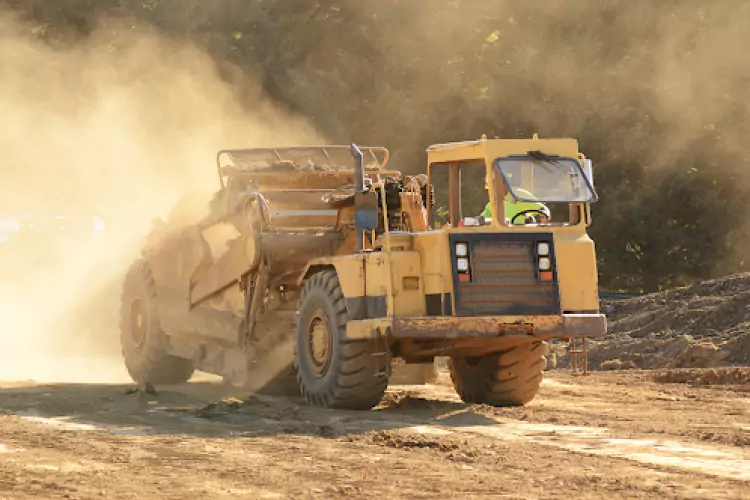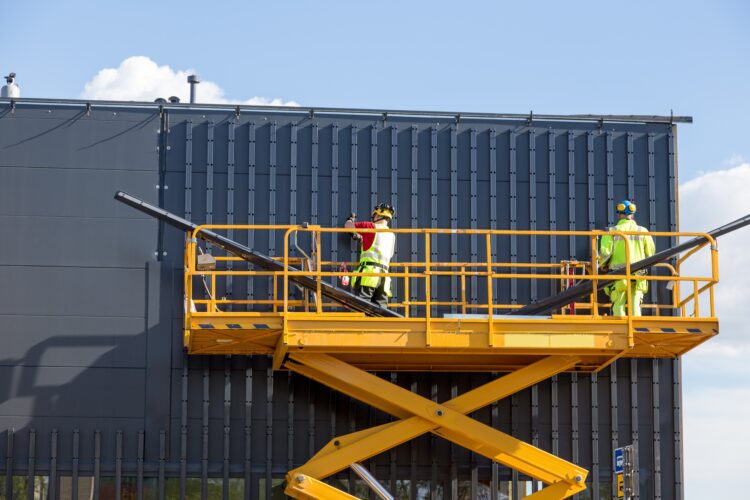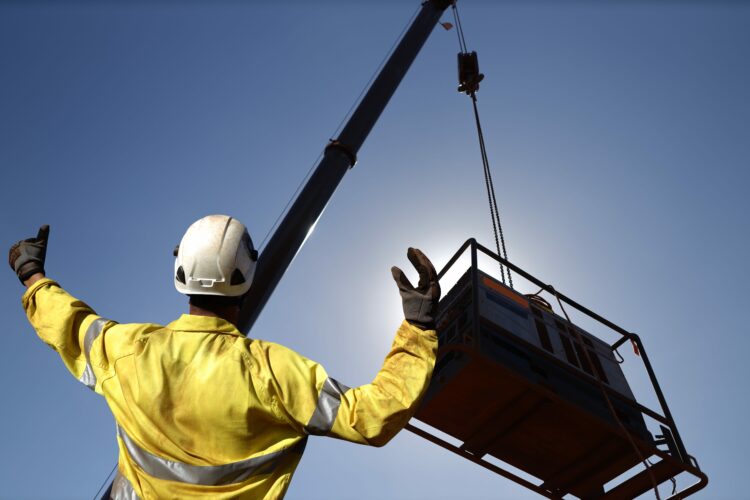When it comes to construction projects, you need powerful equipment to get the job done fast and effectively. Earthmoving machinery enables contractors to excavate, grade, and move large quantities of materials with ease while cutting down on labor costs.
If you own or manage a construction business, it is crucial to understand the different types of earthmoving equipment and how they can benefit your projects.
Here’s what every construction professional should know about earthmoving equipment.
Types of Earthmoving Equipment
Different types of earthmoving equipment are available for rent, each designed to perform specific tasks. Here’s a brief overview of their primary functions on construction sites:
Excavators
Designed to dig and move large amounts of earth, excavators are best used for excavating foundations, performing demolition tasks, and transporting heavy loads. These machines have a hinged arm extending from the front of the cab and a bucket attached to the end for scooping up materials.
An excavator can rotate 360 degrees, allowing the operator to dig and backfill without moving the machine. Excavators are also versatile as they can be outfitted with various attachments like hammers, drills, and grapples for different tasks.
Excavators are ideal for jobs like:
- Digging trenches and foundations
- Clearing land and demolishing structures
- Loading and unloading materials
- Unearthing stumps and piling soil
- Hammering into hard surfaces for demolition or lot-cleaning
Bulldozers
Bulldozers are the toughest earthmoving machinery, weighing anywhere from 18,000 to 230,000 pounds. They have a wide, flat blade in the front that can be angled up or down for different tasks.
These machines are known for their power and capability to quickly move large amounts of earth. The bulldozer tracks provide excellent traction, making them suitable for navigating challenging terrain like muddy or rocky surfaces.
The most common bulldozer type is a ‘crawler dozer,’ designed to float on top of the ground as it propels itself forward on metal tracks. Bulldozers are best used for:
- Fine grading and leveling
- Clearing land and debris after a demolition project
- Excavating large quantities of earth
- Breaking up hard surfaces with the rear ripper
- Pushing soil, sand, or gravel
- Towing other types of heavy equipment
Backhoe Loaders
Earthmoving equipment is designed to serve dual purposes. One such type is the backhoe loader, with a bucket attached to the front and an excavator arm mounted on the back.
Backhoe loaders are multipurpose machines that can dig, load, and lift materials but are less powerful and efficient than excavators or bulldozers. They have four-wheel drive capabilities, making them suitable for rough terrains.
Backhoe loaders are typically used for:
- Excavating and trenching
- City construction projects
- Lifting and loading materials onto a truck or trailer
- Digging basements, ponds, ditches, and septic tanks
Earthmoving equipment rental for backhoe loaders is cost-effective for landscaping and construction projects. You get three machines in one – a tractor, loader, and excavator, saving on each machine’s rental and fuel costs.
Motor Graders and Scrapers
Motor graders are equipped with a long blade to create flat surfaces and grade roads, parking lots, and driveways. The blade is angled up or down from the middle of the machine between the front and rear axles.
Meanwhile, scrapers are massive machines designed for moving large amounts of soil over short distances. They come in two types – motor scrapers and pull scrapers.
Motor scrapers have a hydraulic-powered bowl that can be raised and lowered to load soil, while pull scrapers are towed behind a tractor.
Both motor graders and scrapers are best used for:
- Grading and leveling roads
- Moving large quantities of earth over short distances
- Spreading materials like gravel, asphalt, or topsoil
- Creating drainage ditches and embankments
- Cutting into hillsides to construct roads, dams, or other large structures
Trenchers and Directional Drills
Trenchers are used to dig trenches for cables, pipes, or other underground utilities. They have a narrow angled blade that can cut through hard surfaces like rock and asphalt. Trenchers can create trenches of varying widths and depths, depending on the blade size.
A directional drill, on the other hand, digs deep and long horizontal or angled holes underground. It uses a powerful rotating drill attached to a flexible rod to minimize surface disruption.
Trenchers and Directional Drills are best used for:
- Installing underground utilities
- Laying pipes for water mains, gas lines, and sewage systems
- Creating ditches for drainage purposes
- Boring underground holes for utility or telecommunications lines
- Excavating trenches in buildings, roadways, and yards
Dump Trucks
Dump trucks are used primarily for transporting loose materials such as sand, gravel, or demolition waste across construction sites. These trucks have a large, open-topped bed that can be tipped backward to unload material.
Dump trucks are typically equipped with hydraulics, which operate the raising mechanism and an additional axle to support their heavy loads.
Dump trucks are ideal for tasks like:
- Transporting and unloading large quantities of construction materials
- Removing waste and debris from construction sites
- Delivering fill material to a job site
- Hauling and depositing topsoil, gravel, or crushed rock
How to Choose the Right Types of Earthmoving Equipment

As discussed, various types of earthmoving equipment are designed for specific tasks. When deciding which equipment to use, it is crucial to consider the nature and scope of your construction project.
Here are a few factors to keep in mind:
- Terrain: Consider the surface you will work on – is it flat or uneven? Are there any obstacles like rocks or trees that could impede the equipment’s movement?
- Size and scope: Smaller projects may only require a backhoe loader, while larger operations may need multiple types of equipment.
- Material type: Some materials are easier to move than others, while some require specific tools or machines. For example, trenches for water mains may need a trencher or directional drill, while leveling flooded areas may require a scraper or motor grader.
- Budget: Renting or purchasing earthmoving equipment can be a significant expense. Keep in mind your budget when choosing the right equipment for your project.
If you are still determining which types of earthmoving equipment to use, consult a professional contractor or rental company to find the best fit for your needs.
Safety Considerations When Handling Earthmovers
Operating earthmoving equipment requires specialized skills and training to ensure safety on the job. Here are some essential tips to keep in mind when handling these powerful machines:
- Always wear appropriate personal protective equipment (PPE), including hard hats, steel-toed boots, goggles, and ear protection.
- Regularly inspect the equipment for any signs of wear or malfunctions and report any issues immediately.
- Be aware of your surroundings and potential hazards, such as underground utilities or unstable terrain.
- Ensure all workers on the job site are properly trained and familiar with safety protocols.
- Follow proper maintenance and storage practices for the equipment to prevent accidents or damage.
- When entering and exiting the equipment, use handholds and steps provided to avoid slips and falls. You should also maintain three-point contact just as you would when climbing a ladder.
- Never operate equipment under the influence of drugs or alcohol.
Proper Care for Earthmoving Equipment
Proper care for your earthmoving machinery is essential to ensure its durability and optimal functionality. Here are a few measures you can implement to prolong the life of your equipment:
- Regularly inspect and maintain all equipment parts, including filters, fluids, and tires.
- Periodically lubricate all moving parts to reduce friction and prevent overheating.
- Follow the manufacturer’s guidelines for maintenance schedules to prevent costly repairs and breakdowns.
- Store machinery in a dry, clean area away from direct sunlight.
- Clean the equipment after each use to remove any debris or dirt that could cause damage or wear on the machine.
- Avail of regular servicing and tune-ups to keep your equipment running smoothly.
- Train operators on properly operating and maintaining the machinery to avoid unnecessary wear and tear.
The Benefits of Renting vs. Buying Earthmoving Equipment
Buying equipment can be a significant investment for small to large-scale construction businesses. You may need to shell out a large sum upfront and additional costs for maintenance, storage, and repairs.
Here’s why renting earthmoving equipment may be a better option:
- Flexibility: Get flexibility to choose the right machine for each job, rather than being tied down to one specific piece of machinery.
- Lower Ongoing Costs: Eliminates the need for expensive ongoing costs, such as insurance fees, maintenance costs, financing and storage and transportation expenses.
- Test Out New Machines: Try out different types of equipment before purchasing, helping you make an informed decision if you decide to buy in the future.
- Flexible Contracts: Rent equipment for a specific period or as needed.
If you do choose to purchase equipment, trying out different machines through renting can help you make a more informed decision on the type of equipment that best suits your needs.
Book Your EarthMoving Equipment From a Trusted Rental Group
National Dispatching offers full-service earthmoving equipment rental in California if you’re not ready to purchase earthmoving equipment
Beyond equipment rentals, we also offer construction services to help you complete your project efficiently and effectively. This includes subcontracting, trucking, materials transport and specialty hauling.
Get a quote or book your equipment rental today to see how National Dispatching can help make your next construction project a success



